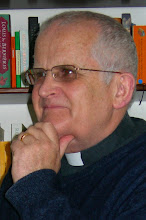1:1-17 The Birth-Record of Jesus
The beginnings and the endings of stories are important because they send us signals as to what we need to know if we are going to make sense of the story. Matthew’s story of Jesus begins with the “birth record”. Others have seen the resurrection as the point when Jesus “was declared to be Son of God with power” (Rom. 1:4) Still others have understood the baptism of Jesus by John as this “Christological moment”, the moment when the story really begins (Mk. 1:1-11). Matthew sees Jesus birth as the beginning of the story. Another Gospel will agree with this, but talk about it in a different manner, and another will push the beginning of Jesus’ story back before the dawn of time.
The birth is neither random nor ahistorical. Jesus: Jesus is born into a people whose story goes back to Abraham. Matthew wants to show us the lineage and show off the patterns of the generations. There is a “wow!” factor at work here that we shouldn’t miss.
Matthew seems to have had two lists at his disposal. One of them, from Abraham to David, is largely available to us in Ruth 4:18-22. The second is a “more popular list” (i.e. it errs on the side of being sloppy) and goes from David down to Jacob the father of Joseph.
The first list has thirteen fathers and thirteen sons but if you count from the beginning of the list to the end, and if your name is ‘Matthew’, you can reckon this to be fourteen generations. If the second list is set out using the same pattern, and with the same degree of numeracy, then it can be split into two further lists of fourteen generations. This is a wonder to behold: an era going from the father of the nation to its anointed king, a second fourteen generation era stretching down to the time of the exile, and a third from the exile to the birth of the Christ.
This patrilineal listing uses the pattern A is the father of B, B is the father of C. Thus
Abraham is the father of Isaac;
Isaac the father of Jacob;
Jacob is the father ...
When the lists are set out like this, it is move evident that there are disruptions to the pattern caused by the mention of five women and the mention of other brothers.
The five women have been a puzzle at least as far back as St Jerome in the mid second century. Jerome says that the five women were sinners and hence foreshadowed Jesus the savior of sinners. This is a little far-fetched and inaccurate. Luther suggests the common thread is that women were all foreigners and hence reflect Matthew’s interest in the Gentile mission. This would not have fitted the way these women were currently viewed. It may be more to the point to note that these women had irregular relationship with their partners, took initiative and took a central role in God’s plan. For example, Bathsheba bore Solomon through her affair with David and she intervened to have her son succeed David.
Why the brothers? Because God’s providence is at work when one brother is preferred over another and in the choice of some feisty but resolute women.
Why did the number fourteen stand out for Matthew? It may be no more than in “Gamatria” the sum of the values assigned to the consonants of the Hebrew word “David” is fourteen.
Raymond Brown points out the artificiality of the fourteen generations pattern. The three epochs mentioned by Matthew are approximately 700, 400 and 600 years long. Fourteen generations would be a little over 300 years (Brown, Birth of the Messiah, p. 74f.)
The genealogy set out by Matthew is clearly not genealogy as we know it nor is it close to what we would expect to find on the fly leaf of a family Bible. A “birth record” such as Matthew gives us could have a number of purposes: it could undergird the status of a family, structure history into epochs, authenticate a line of office holders (“apostolic succession”). We note in passing that Luke’s Gospel has a different genealogy serving a different purpose.
We have left till last the break in the pattern caused by “… Joseph, the husband of Mary; of her was begotten Jesus called the Christ.” In Matthew’s story, Joseph was not the biological father of Jesus. This is by no means an ordinary birth at the beginning of an ordinary story. He wants tp say that Jesus was born into a family and a people that stretched through David and back to Abraham. David and Abraham will play their part in the story that is about to unfold but everything will be under the direction of the God of Israel..
What we are beginning is a story that involves God and the story of an extraordinary individual, Jesus the Christ,
Sunday, December 9, 2007
Subscribe to:
Post Comments (Atom)

No comments:
Post a Comment